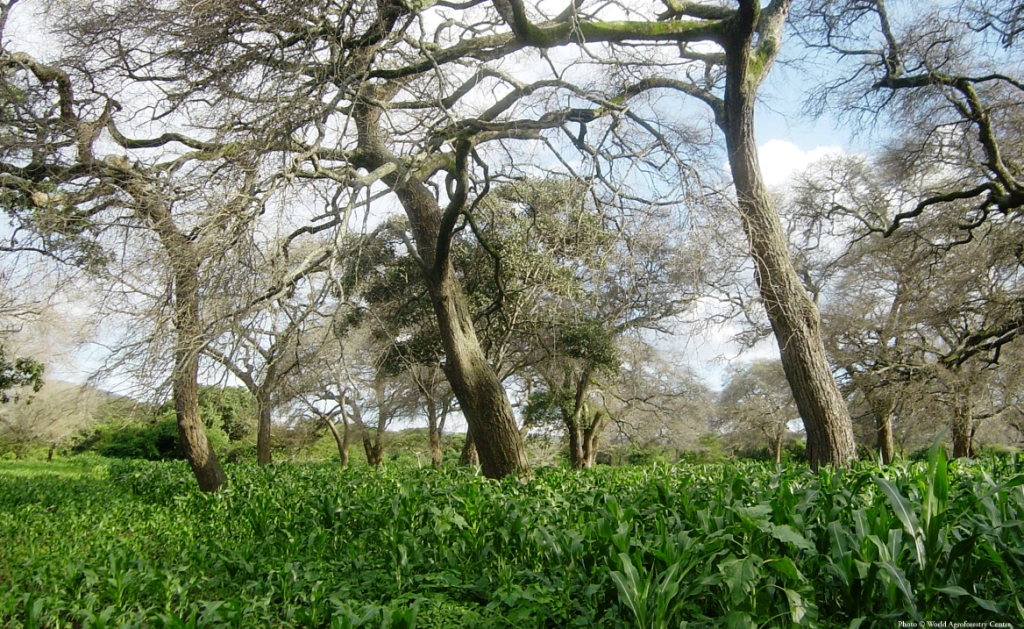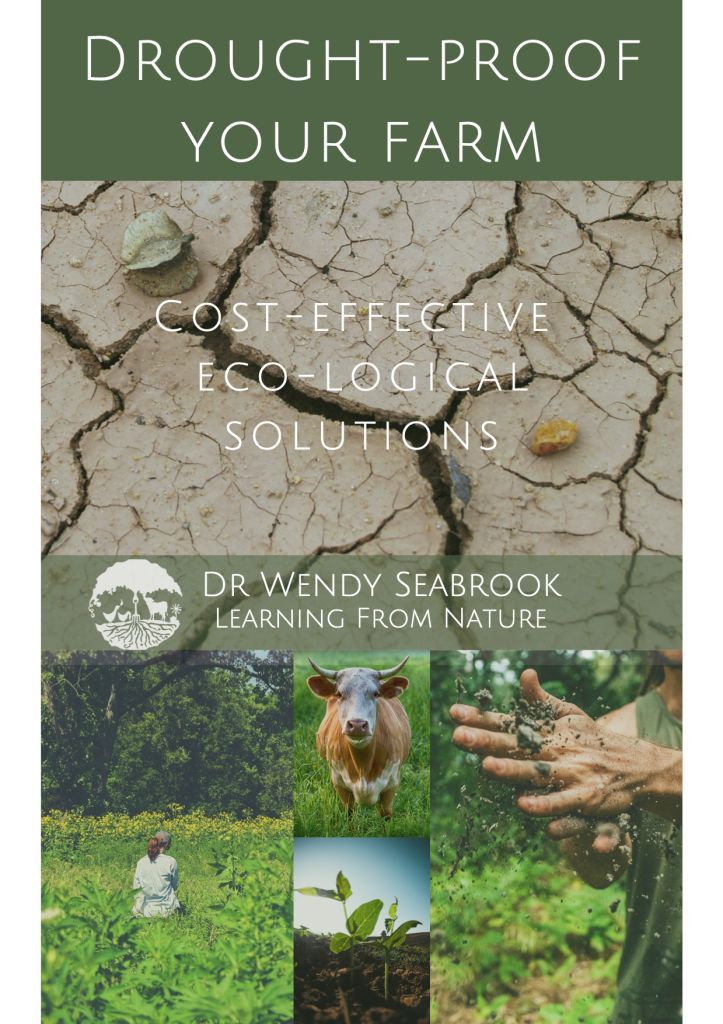We’re getting harder hit by drought. Standard solutions no longer seem enough. Fortunately, there are farmers leading the way and getting heartening results using eco-logical approaches to drought-proofing.
Here’s one of their stories. What these farmers have achieved is inspirational.
Over the last twenty years, farmers in the Sahel region in Africa have drought-proofed their land using regenerative practices that also increase their income and food security.
The region had been open woodlands – scattered trees and shrubs, but like many marginal rainfall areas, massive tree clearing happened from the 1960s. Some trees were taken for firewood, but most were removed because farmers were told that they consumed precious water and nutrients that would otherwise be available for their crops and pastures.
Realising that the reverse is the case, these farmers have re-established the architecture of the open woodlands across over five million hectares of farmland. By strategically planting and allowing the natural regeneration of trees in their arable fields, pastures, and vegetable plots, they make better use of the rainwater when it comes, keep their soil moist longer into the dry season, and have created opportunities to diversify their income streams by growing up!
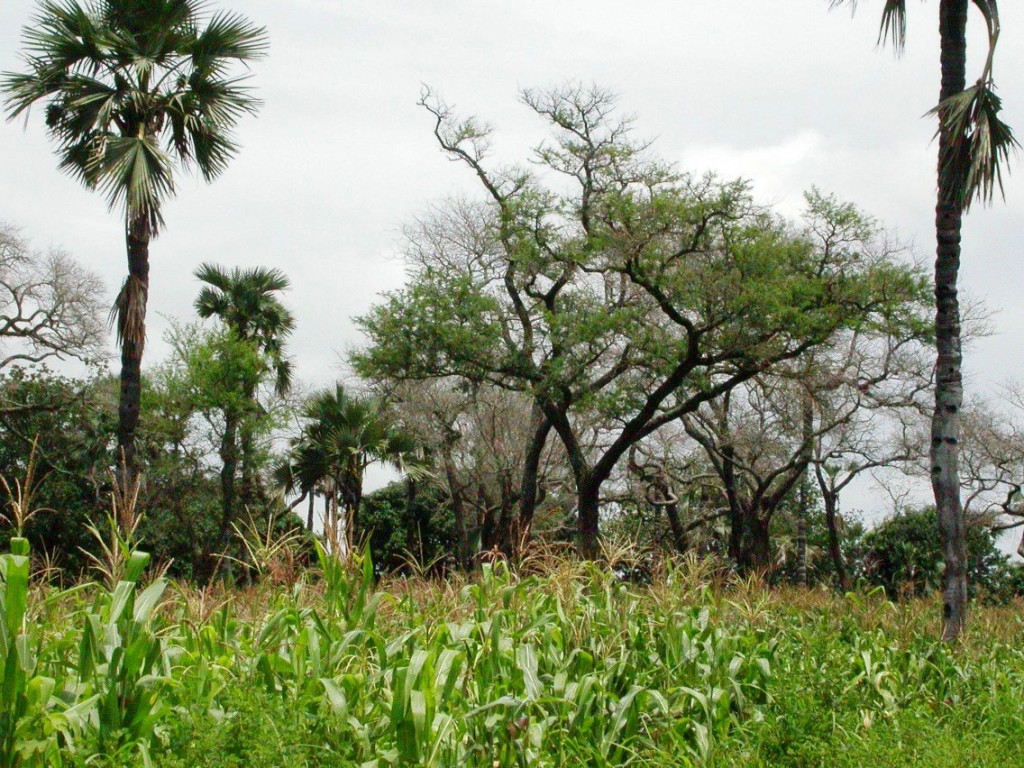
Growing Maize under Legume Trees
Using the vertical space, these farmers now grow extra forage and emergency stock feed for livestock and select tree and shrub species producing fruit, nuts, seeds, construction timber, pollen and nectar for bees, etc. For example, they extract Shea butter from Shea trees (Vitellaria paradoxa) to supply the cosmetics industry. They also make powder from Baobab fruits for smoothies, juices and ice cream, as part of a US$3.5bn new export industry.
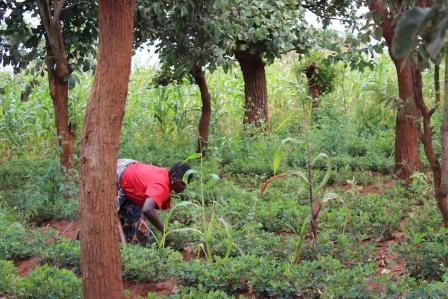
Growing Vegetables under Trees in Africa
Backing up the farmer’s experiences, here are the results from a trial over four years comparing yields from maize growing outside and under the canopy of Faidherbia albida, a native legume tree. Similar yield increases have been demonstrated in growing sorghum under Faidherbia albida and Cordia africana in Eastern Ethiopia.

Maize growing under the canopy yielded 88–190% more maize than sites outside of canopies.
The families in the Sahel region were willing to make radical changes because their situation was urgent. They didn’t have the luxury of making changes they hoped would be enough. With no government assistance and low-interest loans – their lives, as well as their livelihoods, were threatened. Arguing that they lacked sufficient funds, time or the necessary equipment and machinery to drought-proof their farms was not an option!
By asking ourselves, “what’s the best thing we can do to drought-proof our farm” we can also do the major re-think necessary to take us beyond hoping what we do will be enough.
We don’t get as dry as in the Sahel on our farm in the Dry–Wet Tropics. But we’ve made designing for drought-proofing a priority because we get hot, dry winds for much of the year and sometimes nine months without rain. We’re seeing the benefits of combining Holistic Planned Grazing with growing trees across our paddocks to create Silvopastures, growing open-canopied legume trees in our orchard, and planting windbreaks (see aerial photo below).
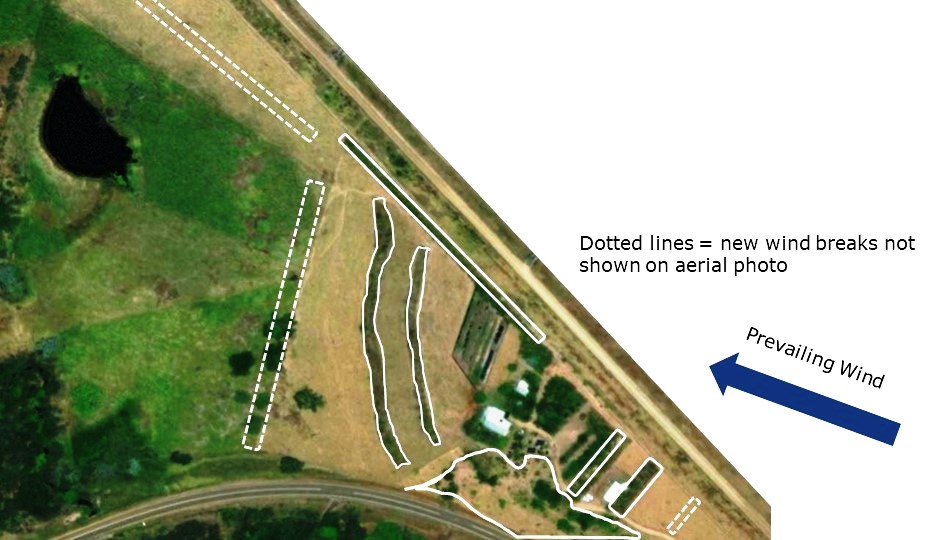
Drought-Proofing Hill Top Farm, Queensland, Australia
By creating shade and lessening the impact of the wind, we have reduced water loss from the soil and vegetation. Our pastures are more productive as the grass under the trees stays green longer into the dry season and continues to photosynthesise later in the morning than grass drying out in the full sun. In the orchard, the legume trees providing ‘protective cropping’ also reduce sunburn on our fruit.
Drought-Proof your Farm using Trees
The role of trees in improving our water cycles for drought-proofing is well known.[6] Trees create shade and reduce wind, and air temperatures and therefore, water loss from soil through evaporation.
Less well-known is that growing trees and other additional vegetation also dramatically increases the amount of rainwater infiltrating and stored in our soil by improving the food supply to our soil organisms – the experts at building good soil structure.
That’s why – Silvopasture, the raising of animals among trees, is ranked across Africa, Asia and South America as the most important climate-smart intervention graziers can make. Arable farmers and horticulturists in these regions are also starting to grow cereals and veggies using agroforestry designs. Research demonstrates that planting trees in paddocks can increase water infiltration three-fold.
And we now have evidence that rainfall increases when we grow more trees!
The principles are eco-logical!
By increasing root exudate and plant biomass production, and recycling of organic waste materials from these plants in our soil, combined with other organic waste materials from livestock and other living organisms, we improve the food supply for the soil organisms maintaining our soil infrastructure. More water infiltrates and gets stored in our soil.
See the difference you can make in this video.
Get Support with Drought-Proofing your Farm
Suggested articles –
- How to Drought-Proof your Farm
- What is Healthy Soil?
- How to Build Healthy Soil – Eco-logically
- Trees make Rain – there is science now to prove it!
- How can we increase Rainfall – Eco-logically
Or find out how to use this eco-logical approach on your farm – Drought-proof your Farm
Images © World Agroforestry Centre
